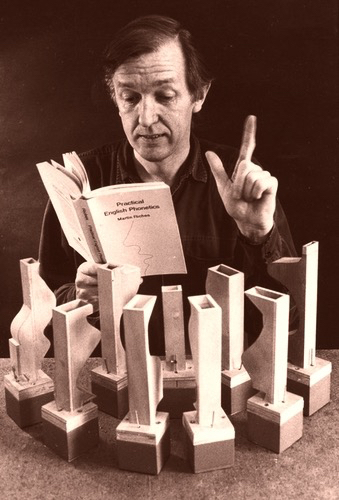Martin Riches et ses sculptures parlantes
Algorithmic music
The 'music salons' are a new form of presenting music, successfully inaugurated last year at the Alhambra. They involve breaking the tradition of a concert ritual by alternating, in a free and deambulatory sequence, performances of unusual works, meetings with the composers, the musicians and their instruments, radio interviews and a friendly drink. Throughout the afternoon of Sunday 18 March, the Alhambra will be open for visitors to discover the strange talking, singing and thinking sculptures created by Martin Riches (1941), a British plastic artist who constructs motorised mouths, talking organs, and a mechanical singing larynx that will feature as the prima donna of a Lied by Masahiro Miwa (1958), new Olympia.
With Alexandre Babel, Director of Eklekto and member of KNM Berlin, we have imagined a whole environment
of vintage nuggets for machines and percussion, such as Partitions-gouffres by André Riotte (1928-2011) who, with Michel Philippot and Pierre Barbaud, invented algorithmic music. He leaves the machine complete freedom to create, with the composer confined to prescribing the operative rules. Another artist who renounces his demiurgic prerogatives is Joseph-Matthias Hauer (1883-1959). The only thing we usually know about him is his name; before Schoenberg, he was the inventor of a 12-tone writing technique, but it is never played. However, his aesthetic is premonitory, heralding Cage and Feldman and, as of 1919, proposing that one main automatic generator substituted the creator's wishes.
During the afternoon, there will also be automated drums, formal piano, aleatory music and cybernetic pieces: a cabinet of curiosities, the bric-a-brac of an emerging science.
Marc Texier - director of Archipel
